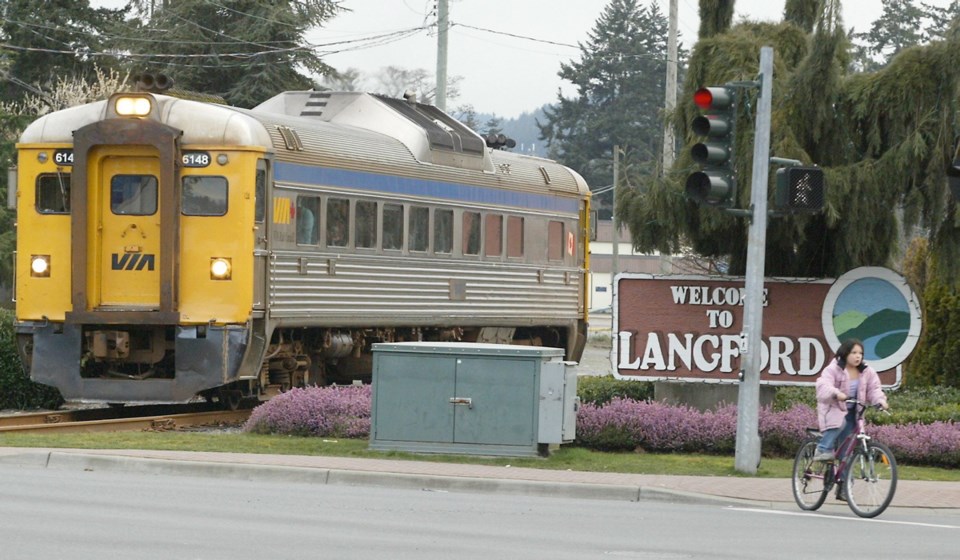It’s time to scrap the “Victorian-era fantasy” of a Vancouver Island rail system and instead consider options such as a multi-use corridor, says a Snaw-naw-as First Nation councillor.
“We are trying to be realistic and start the conversation,” Brent Edwards said Tuesday.
He was speaking after the recent release of consultant’s report on the corridor’s condition, including its bridges. The report estimated the cost of restarting passenger and freight service at between $326 million and $729 million, with another $595 million needed for commuter service between Langford and Victoria.
“The Island Corridor Foundation board of directors needs to accept the fact that this condition assessment report is the death knell of the E&N rail,” said Edwards, who said he is speaking for the Snaw-naw-as First Nation.
“There is absolutely no business case for these immense investments.”
Senior governments have shown no interest in paying to restore the service, he said.
The Snaw-naw-as First Nation sued the Island Corridor Foundation in B.C. Supreme Court over access to the rail corridor. A decision is pending following a trial, Edwards said.
The First Nation’s land is split by the corridor, and the potential rail use is blocking the development of 90 acres of land, he said
A non-profit organization, the Island Corridor Foundation was set up to find the best public use for the unused line and that does not mean that rail is the only possibility, Edwards said. But the foundation has “tunnel vision on this railway,” he said.
Edwards called on the foundation’s board of directors to look at other possible uses, such a multi-use trail that could accommodate cyclists, hikers and wheelchairs.
There is no capital to pay for a rail system, he said.
Larry Stevenson, the foundation’s executive director, has questioned the report’s estimates, saying that a more modest and less pricey commuter system could go in between Langford and Victoria.
He said the corridor is “shovel-ready” for construction upgrades, as a way to restart the economy after the coronavirus.
Edwards said the assessment “makes clear is what we have known all along: Rehabilitating this railway line is nothing more than Victorian-era fantasy.”
He urged the foundation’s board to repurpose the trail, “which was envisioned when the ICF was created and why it is called the Island Corridor Foundation, not the Island Rail Foundation.”
The consultant’s condition assessment was prepared for the province, which is working on a transportation strategy for the south Island. Edwards said the report does not account for operating costs or purchasing trains, and identifies numerous risks.
Passenger service was last available on the Island in 2011. Poor track conditions shut down the system.
Some Island mayors support the idea of rail, saying it is a greener way to transport people, it may come with a business case to offset road repairs, and that it would open up new economic opportunities from north to south.
Others argue it is a non-starter given the Island’s population, which opponents do not believe could sustain such a service. They believe it would be a waste of taxpayers money and that the corridor could be used in other ways.



